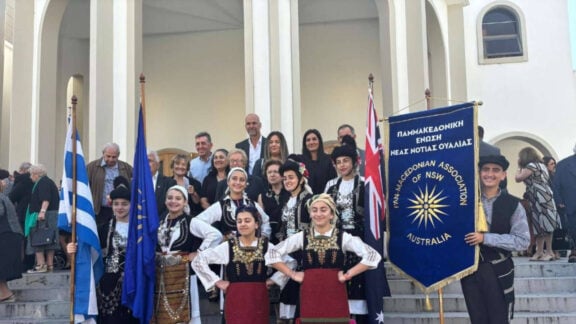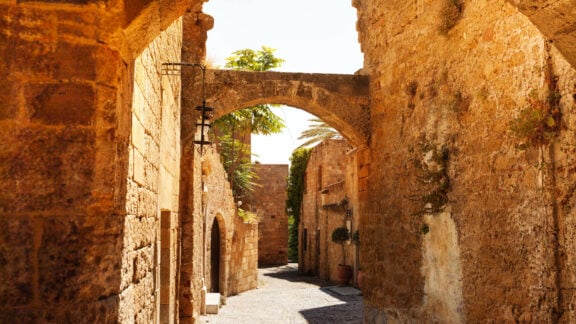The history of pita follows the history of wheat and barley and is generally connected to the basic use of cereals as part of the basic diet of man. In Greek history, the pita seems to have origins in the form of the ancient ‘πλακούντα’ (literally translated means “placenta”), later called πλακόπιτα (flat pita) that was cooked in ovens or on a hot rock. All the way from ancient times the pita was always connected to the small oven called “krivano” (κριβάνο) that was passed on to the Byzantines as ‘klivanos” (κλίβανος) and in recent times as “gastra” (γάστρα) this later version is similar to the north African “tangine” and is coming back into fashion in Greece today with compliments to the new revolution going on in Greek food and its impact on the world stage.
Lets look at what is considered a pita in the Greek culinary culture – nearly everything baked with flour. Cake is an introduced word in the Greek language as till recently all cakes were called pita for example, yiaourtopita (translated yoghurt pita), karpouzopita (watermelon cake), vasilopita, karidopita, but in fact these are cakes by western standards but pita by Greek standards. There is also the bougatsa which in fact is a pita as well but this delicious concoction will be dealt with in detail in a segment all of its own in another edition.
Going back to days of old, the ancients had pita as an everyday staple food. A favourite was of a daily pita called mitlotos (μυτλωτός), which included, honey, olive oil, cheese and garlic. It was a favourite for breakfast washed down with wine. But before you go judging those Greeks for being drinkers please keep in mind that they always drank their wine watered down with water and sometimes seawater, it was illegal to drink wine straight and very heavy punishment came with being drunk in public, even the death penalty. Later the Macedonians would drink their wine straight and were known for their drunken misbehaviour and our favourite Macedonian Alexander (and his mates) were well know for their drunken arguments during which Alex even killed one of his mates.
The Athenians of the upper classes were known for finishing off their meals with fresh and dried fruit, salted almonds, cheese, garlic and onions and savoury and sweet pites. These pites were taken on by the Romans as was nearly all the Greek diet and spread all over the Roman world. Today we have a variety of pies, tarts and other pita like creations all over the world which have evolved given the imagination of chefs and cooks.
The pita in the Greek world, (the Greek world had no boarders as there were no boarders till after the WWl in Europe) was and is a very common dish as it has a lot of advantages. It is economical, satisfying, keeps well, and can be transported easily. This explains the reason why the pita and its many variations were famous in Hpeiros and Western Macedonia, areas populated by semi-nomadic tribes of animal breeders like the Vlachs and the Sarakatsanaioi. For these people, a pita was the meal and the bread that went together. The filling always had to do with the available seasonal food and what was in the larder at the time, or with the food exchanges that could be made with the farmers of the area and, naturally, the creativity of the women making the pites…
There are countless recipes for pita, even ones without pastry, with only a base pastry, with layers of pastry, many different kinds of pastries and hundreds of fillings. The pastries were often made with pig fat as it was more readily available and became the norm. Butter was a luxury that only today can be used, and naturally olive oil was kept for cooking and not for pites. Today olive oil is used, but the pig fat or lard as it is commonly known, is still used by some households in the north.
The making of the filo requires great technique and the look of the pita also varies from region to region. I’ll try and describe the look of three of the main pites.
1. The method of the sun, (μέθοδος του ήλιου) which is the tradition of Western Macedonia, (Kozani, Florina, Kastoria, Grevena). Made with lard, divided into two pieces one for the bottom and one for the top, once the pita is made the cut lines are made by marking a circle in the centre and then marking lines like rays from that centre where it gets its name as it looks like the sun.
2. Gkeslemes (γκεσλεμές): This name comes from Turkish and this pastry is made in Eastern Thrace and subsequently spread to the rest of Greece. It reminds me of the way puff pastry is made today only this was originally made with lard. The pastry is divided into about ten pieces, five for the bottom and five for the top of the pita. Each piece is rolled out as fine as possible, spread with the fat (we now use butter) on each layer and when all the five layers are put together and rolled out on top of each other, creating the puff that happens in that type of pastry.
3. Provincial filo (χωριάτικο φύλλο) with this filo a few sheets of filo are opened and the pita is made in layers of filling-and-filo, filling-and-filo and so on. It is very common in Thessaly.
There are many different types of filo and in Greece today one can buy outstanding filo from the supermarket for a pita and it is just as good as the homemade filo. The filo tissue type that we can buy here and can be bought in Greece as well is supposed to be only for sweets, the likes of galaktobouriko and baklava and I personally would never make a real pita from this filo as it goes soggy and limp. There is no body in the pita. The pastry is suppose to be able to hold the insides together like a sandwich.
When it comes to making pita, please use your imagination. I have often opened the fridge and anything that I have in there and is still ‘alive’ I will mix up, make a pastry and in one hour we have a cooked pita.
I will end by admitting that I have never mastered the art of the curtain rod rolling pin and I envy those who can do it. I use a fine modern rolling pin, but I still wish I could do it like those northern women, even though I am from the north!
Advertisement
A finger in every Greek pie
A favourite fast food in Greece, there are thousands of variations of pita. From region to region, savoury to sweet: let your imagination run wild when it comes to fillings







